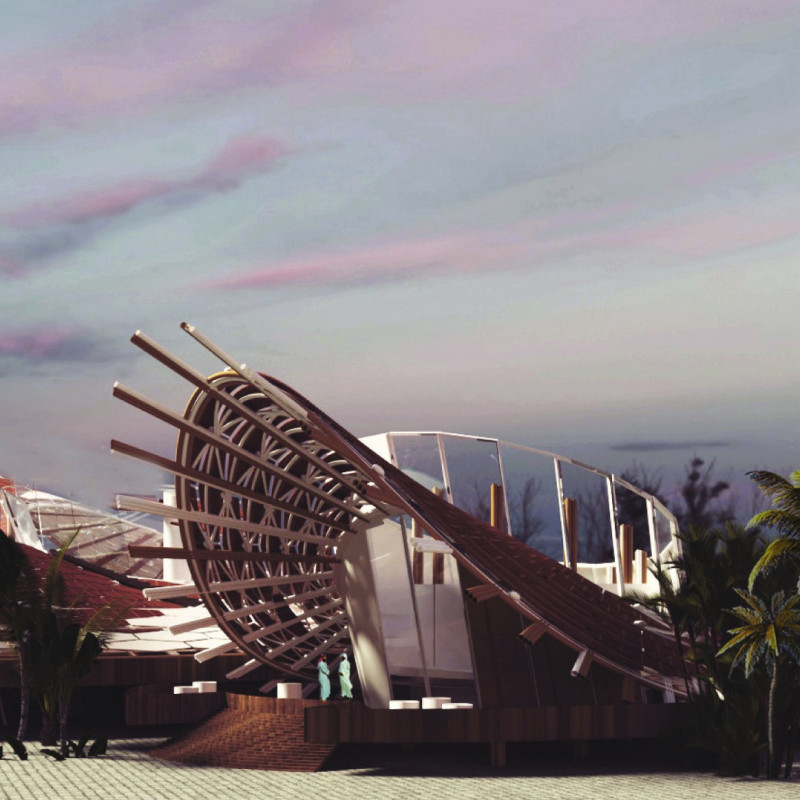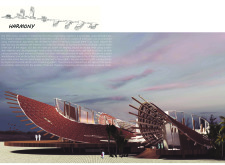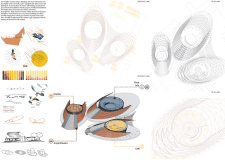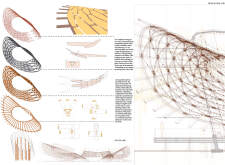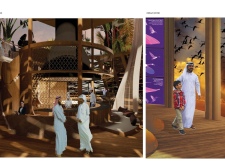5 key facts about this project
Harmony is located near the Al Wathba Wetland Reserve and designed to serve both educational and recreational purposes for visitors. The design draws inspiration from the movement of a bird's wing, which conveys concepts of grace and lightness. By using this form, the building connects to its natural surroundings while emphasizing sustainability and respect for the environment.
Design Integration
The concept of Harmony is heavily dependent on advanced design techniques applied through Grasshopper software. This allows for precise control of geometric shapes, resulting in a structure that reflects the beauty of nature. Each curve and point is crafted using mathematical algorithms, which creates a design that responds well to its environment while bringing a modern touch.
Functional Elements
A notable feature of Harmony is an amphitheater area that offers visitors stunning views of the wetland reserve. This space encourages visitors to connect with the natural landscape, promoting community interaction and appreciation for the outdoors. The layout enhances movement and accessibility, ensuring that everyone can enjoy their time at the site.
Solar Panel Integration
Sustainability is a key aspect of Harmony, illustrated by the strategic placement of solar panels throughout the structure. These panels are designed to capture as much sunlight as possible. A computer system optimizes their arrangement, making real-time adjustments based on the sun's movement. This thoughtful approach highlights the commitment to energy efficiency and environmental responsibility.
Materiality and Structure
The building's strength comes from the use of bamboo stems, offering a lightweight yet sturdy framework. Choosing bamboo reflects a dedication to sustainable materials while ensuring the structure remains solid. The bamboo creates a self-supporting shell, complemented by thin glass that allows natural light to flood the interior spaces. Glued wood adds warmth and texture, making the environment welcoming for visitors.
The arrangement of solar panels mimics the patterns found in bird feathers. This design choice serves both a practical purpose and an aesthetic one, showing a clear intention to blend the architecture with its natural context.


